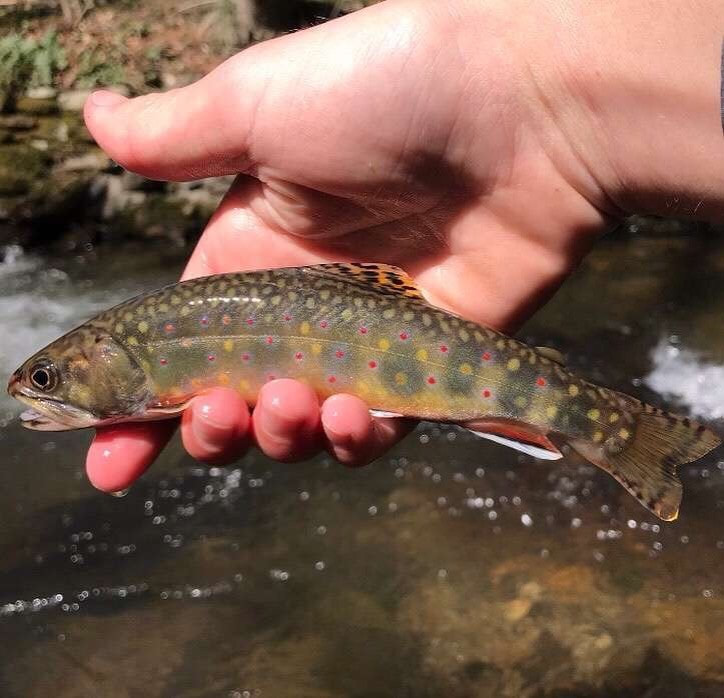Trippy Trout Club NFT project was created by two brothers with a passion for fly fishing.
A portion of the proceeds will be donated to a non-profit organization to help fight the declining Appalachian Brook Trout population.
You can Mint yours at https://trippytroutclub.org/mint/
Or follow on Twitter https://mobile.twitter.com/Trippytroutclub
Historically, this species had a range of over 10 million acres, and today they inhabit 55% of that range. Genetic analysis concludes that Southern Appalachian brook trout are a unique strain of brook trout native only to this region.
The Appalachian Mountains hold large numbers of high elevation streams, where cold clean water provides ideal habitat for brook trout. These streams are comprised of many boulders that create pockets and holes for the trout to hide in. However, Southern Appalachian brook trout face some threats from which they cannot hide. Trippy Trout Club NFT is helping to save this important species.

Food
Adults eat a wide variety of aquatic and terrestrial insects, as well as crustaceans, fish and other small vertebrates, while young feed on small aquatic and terrestrial insects.
Spawning
Occurs in fall, generally September through November. Females will construct a nest (redd) in gravel, and incubation period varies depending upon water temperature.
Young
Called alevins. Remain in nest (redd) until yolk sac is absorbed, then emerge as free-swimming fry. Most reach sexual maturity at approximately two years
Life Expectancy
Generally short-lived, seldom longer than 4 years in the wild.
Range and Distribution
Wild brook trout are often restricted to small headwater streams in the mountains of North Carolina. Genetic studies indicate that brook trout native to North Carolina represent a unique strain called Southern Appalachian brook trout.
General Information
The brook trout is regarded as one of North America’s most beautiful native fish species. Here in North Carolina, local anglers often call them “specks,” “speckled trout,” or “brookies.” Recent genetic studies suggest that the native brook trout found in the southern Appalachians, including the mountains of western North Carolina, represent a unique strain called Southern Appalachian brook trout.
People Interactions
In North Carolina, brook trout are legally taken by hook-and-line sport fishing, and management is directed toward enhancing and protecting wild populations, while providing seasonal fisheries via stockings. Anglers prize brook trout for their delicate flesh and superior flavor, and also because of their willingness to take artificial and natural baits. Fishing dry flies, streamers and nymphs that imitate natural food items works well. This method is especially popular in North Carolina’s many streams that support wild trout. Fishing baits, such as worms and corn, work well for hatchery-reared brook trout. Spin casting small spinners, spoons and crankbaits can be productive as well. Check the current trout fishing regulations on the type of lures allowed as well as the size limit and creel limit for a particular trout water before fishing









